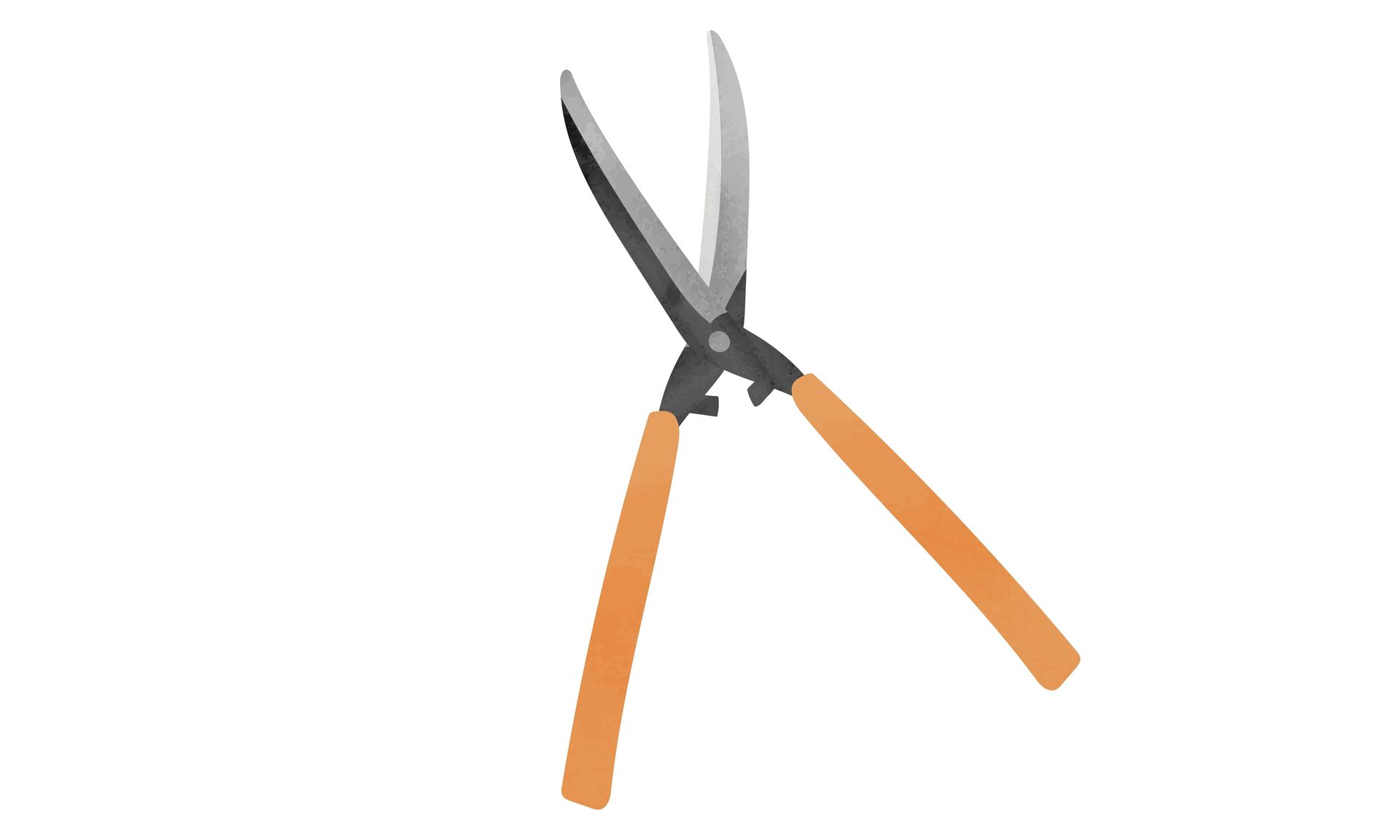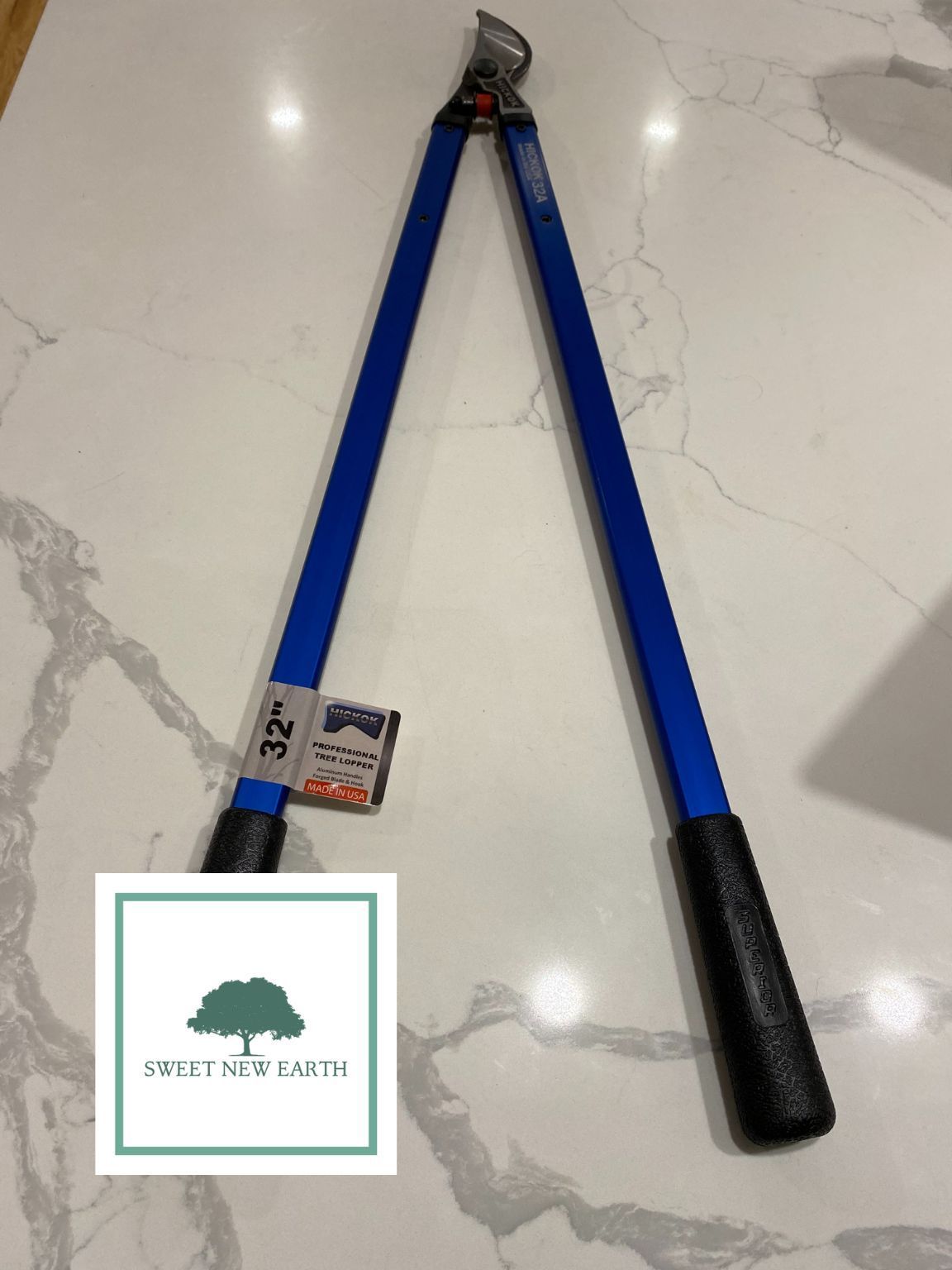Sweet New Earth is an ad free and entirely reader-supported site.
When you purchase products through links on our site, we may earn a commission which supports our reviews.
Learn more.
Loppers vs Shears: Side by Side Comparison

When it comes to garden care, do you use loppers or shears? Loppers and shears are two tools that can help you prune or trim your plants in different ways. They also have different builds and are used for separate purposes. In this loppers vs shears comparison guide, we discuss the differences between both tools and explain their uses.
Table of Contents
Loppers or Shears: Which One Do You Pick?

Loppers
Loppers are pruning tools that cut thick branches up to 2.5 inches in diameter. These tools have long handles and sharp cutting blades with bypass-style or anvil-style heads.
Bypass loppers use two curved blades that pass by each other, similar to the way scissors cut. Meanwhile, anvil loppers have a single blade, like a guillotine, with a flat anvil beneath it.
When using a lopper, you use two hands. You have to squeeze the handles together to cut the branch, or you can use both hands separately on each handle.
Types of Loppers
There are two main types of loppers:
- Bypass Loppers
- Anvil Loppers
Bypass Loppers
A bypass lopper is helpful when you need to cut living branches and you don't want to injure the plant. The bypass loppers have two blades that pass each other as you squeeze the handles, allowing you to make precise cuts. Think scissors when it comes bypass loppers.
The adjustable handles make it easy to adjust the blade position and reach difficult angles. You should use a bypass lopper on live wood as a cut from this tool allows quick healing for the plant.
Do not use bypass loppers on dead plants as they get jammed in dead wood, bending the blade. Stick to anvil loppers or folding hand saws.
Anvil Loppers
An anvil lopper is used to cut thick branches and tough materials. The lopper has two blades, one on top and one on the bottom, that meet in an anvil-shaped cutting edge. Anvil loppers use more of a crushing mechanism to get through branches making them great for deadwood.
The design allows for maximum leverage and an efficient cut on tough materials. The blades are made of hardened steel, making them durable and able to handle tough cutting tasks.
How thick branches can loppers cut?
Loppers can cut through branches that are up to 2 - 3 inches in diameter, depending on the lopper's design and cutting capacity. If a branch is thicker than the capacity of the loppers, it may be necessary to use a saw or pruning shears.
Not all loppers are designed to handle every size and type of branch. If you are unsure about the type and size of branches that your loppers can cut, it is best to refer to the manufacturer's instructions.
Shears

A shear is a gardening tool used for cutting, trimming, and shaping plants. It is a handheld tool that has two blades with sharp edges which are joined together at the handle.
Shears are used to cut through stems, leaves, and other plant parts to shape plants. They can also be used to remove dead or damaged branches or to thin out overgrown plants.
Shears and scissors are often confused, but they are two different tools. Shears have longer handles and blades that are curved or serrated, whereas scissors have shorter, straight blades. Both tools are used for pruning, but shears are more suitable for thicker material.
Types of Shears
There are a few types of gardening shears based on their uses and design. Here are some of them:
- Hedge Shears: Hedge shear is used to give shape and style to a hedge. It is usually longer than other shears and features long handles that provide better control over the cutting.
- Pruning Shears: Pruning shears are used to trim small plants and shrubs that have thin stems and branches. It has short and curved blades that can easily perform precise cuts on small branches.
- Needle-Nose Pruners: A needle-nose pruner is a great tool for maintaining your plants. The slim profile and sharp blades make it perfect for trimming small branches and leaves. It can also work to break up soils and reach into tight spaces. Needle-nose pruners are also useful for deadheading, which is the removal of spent flowers to promote new growth.
- Thinning Shears: Gardeners use thinning shears to selectively remove stems, branches, and leaves while preserving the shape of the plant. You can also use it to thin out a dense shrub or hedge.
Did you know? Shears have been around since ancient Egyptian times. Originally, Egyptians made them out of one metal piece, but as technology improved, so did the shears.
Nowadays, shears come in a variety of shapes and sizes and are made from durable materials such as stainless steel or titanium. They can also come with additional features such as rotating handles, cushion grip handles, and safety locks.
What are shears good for?
In the garden, you can use shears to cut back perennials and trim grasses. Shears are especially useful for pruning and shaping bushes, hedges, shrubs, and trees.
They are perfect for shaping the height of perennials and grasses, removing dead branches and weeds, and creating a more manicured look.
Shears are also great for harvesting fruits and vegetables like apples, strawberries, and tomatoes. If you have a rose garden, shears are the perfect tool for cutting roses.
How Thick Can Shears Cut?
Shears can cut plants of thickness up to 1.25mm, depending on the type and material of the shears. Some can even handle more than 2mm, but it is best to check the specs before cutting thicker materials.
For heavier material, pruning saws or hedge trimmers are recommended as they can handle much larger branches and stems.
That's all folks!
The cutting mechanism of loppers and shears differentiates them from each other. Shears are well-suited for lighter tasks, such as trimming foliage, while loppers can tackle larger branches.
When performing pruning tasks, you should choose the right tool for the job. If you have to shape or prune a large branch or stem, use loppers. For small foliage and plants, you can use shears.
When unsure, it's best to consult with a professional who can advise the appropriate tool for your specific project.
FAQs
-
What is a lopping shear?
A lopping shear is a tool used to cut small branches and stems. The blades of a lopping shear are curved, so they can easily cut through thicker material.
Lopping shears have either a straight or curved handle, depending on the type of cutting job required. The curved handle allows for more leverage when cutting thicker material, while the straight handle is better suited for finer work.
When using a lopping shear, it is important to keep the blades sharp and in good condition. Dull shears can cause damage to plants when cutting.
Before you go...
Now that you know the difference between loppers and shears, you can make the right purchase. Be sure to check out our next article on the best tree loppers out there so you can get to lopping off branches...
Related Articles:

Carl Anderson
Carl Anderson is an avid outdoorsman with a keen interest in writing about and reviewing tools. He has over 20 years of writing experience and the only time he isn't feverishly typing away at his computer is when he's outside in nature working on his projects. You can learn more about him here.
Join our community!
Join to receive guides, insights, and the latest gardening deals!
Newsletter
Thank you for subscribing!
Please try again later
Sweet New Earth is reader-supported. When you buy through links on our site, we may earn an affiliate commission.
All Rights Reserved | Sweet New Earth
